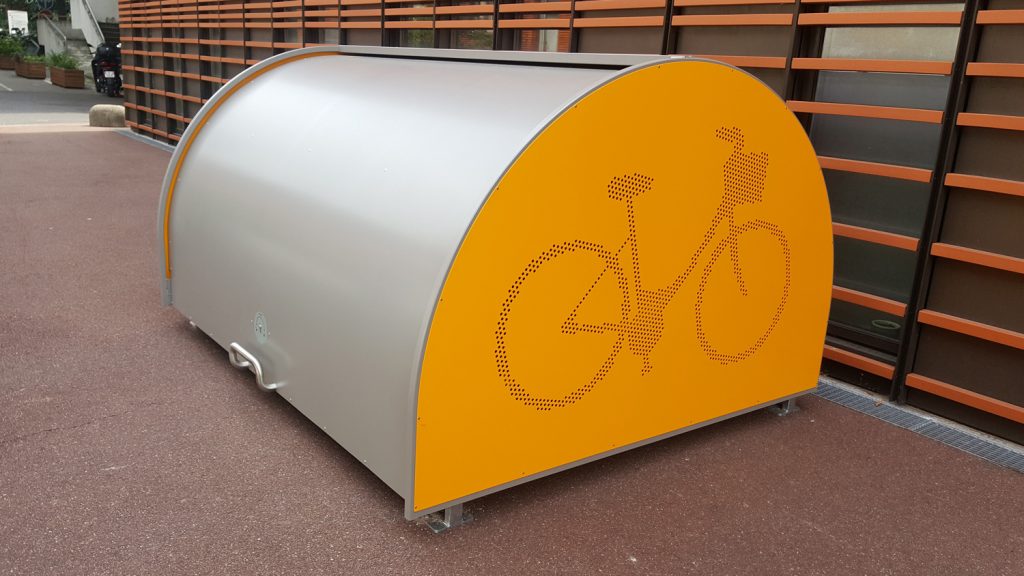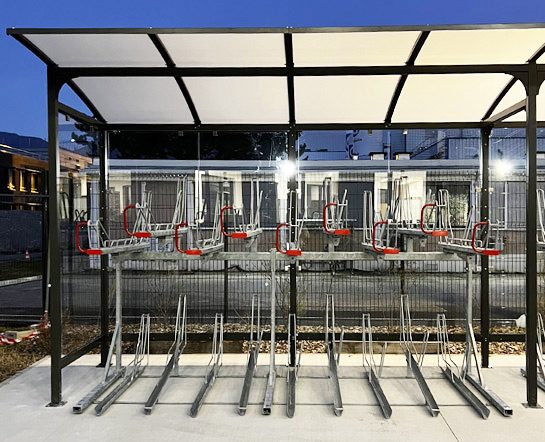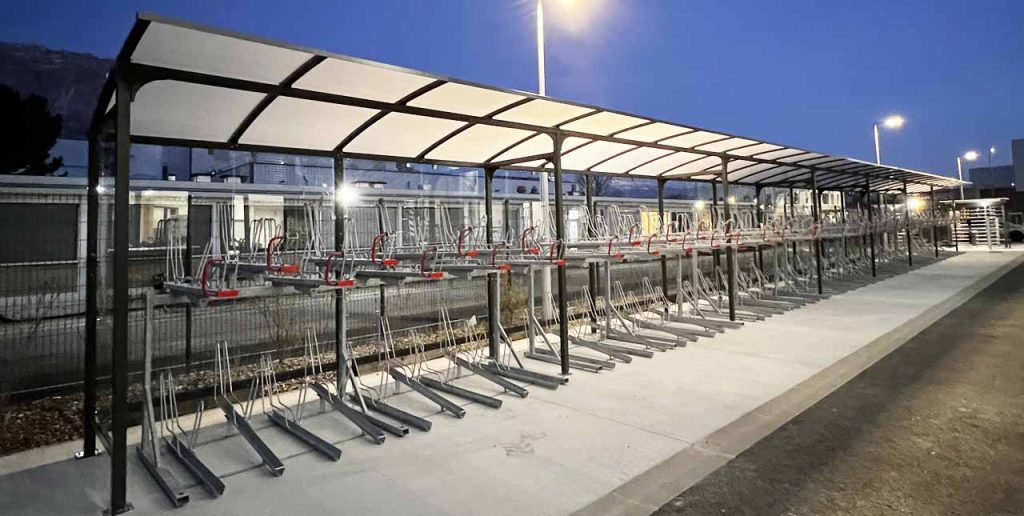
As a company, investing in a bike shelter goes beyond simply installing a physical structure. It represents a true commitment to sustainable mobility, employee well-being, and reducing your environmental footprint. Providing secure bike parking is a first step, but how can you ensure that the shelter will actually be used?
This guide not only provides you with the key steps for fitting out a bike shelter to suit your needs, but also practical strategies for convincing your employees to make cycling their preferred means of transport. From raising awareness of the benefits of cycling, to financial assistance and infrastructure, find out how to make your bike shelter a successful and sustainable investment.
Why install a bike shelter at your company?

Installing a bicycle shelter within your company offers a number of advantages, both for the company and for its employees. In a context of growing awareness of ecology and sustainable mobility, cycling is becoming an increasingly popular alternative to traditional modes of transport. Here are just some of the reasons why it makes sense to install a company bike shelter:
Reduction of CO₂ emissions
Encouraging cycling helps reduce the carbon footprint, thereby contributing to a CSR (Corporate Social Responsibility) approach.
Employee well-being and health
Cycling is an excellent way to stay fit and reduce stress. Employees who commute to work by bike may be more energetic and productive, while also reducing lateness and absenteeism.
Reducing parking-related costs
By installing a bike shelter, the company can reduce the demand for costly car parking spaces while freeing up space for other uses.
Enhancing the company’s image
Commitment to sustainable initiatives, such as promoting cycling, enhances the company’s brand image with clients and partners, and strengthens its employer brand with potential employees.
Raising employee awareness and offering support
First, raise awareness and inform your employees about the health and environmental benefits of cycling, while highlighting the savings compared to car use or public transportation. Motivate your employees to use bikes by providing practical solutions such as lockers or showers for cyclists, or by installing bike service stations.
Some employees may lack confidence in their ability to cycle in urban areas, perceiving it as dangerous. It is possible to offer workshops, training sessions, or physical courses to help them gain confidence and learn the basics of safe cycling.
Financial assistance for purchasing a bike or a bike shelter
One of the barriers to cycling mobility, according to some, is the initial cost of acquiring a bike. Therefore, it is important to encourage employees by facilitating the purchase of a bicycle. There are financing programs available in both the United Kingdom and the United States to support the purchase of bicycles. In the UK, the Cycle to Work Scheme allows employees to save significantly on the cost of a bike through salary sacrifice. In the US, several states offer grants or tax incentives for the purchase of electric or cargo bikes.
→ Learn more about the Cycle to Work Scheme (UK)
→ Discover bike grant programs in the USA
